
How to retain our humanity in the exponential age...
I love finding answers in the most unlikely of places.
This time, that place was Mongolia. The Mongolian Steppe to be exact; where Genghis Khan was forged, where wild horses run free, and where (the OG) nomads prove what we all know yet tend to ignore; that less truly is more.
It's hard to put this place into words. When you first arrive, it feels entirely alien. Entirely untouched by the modern world. It’s a place of pure simplicity, raw beauty, and ancient wisdom.
It’s also the perfect place to unplug and fall entirely off the grid.
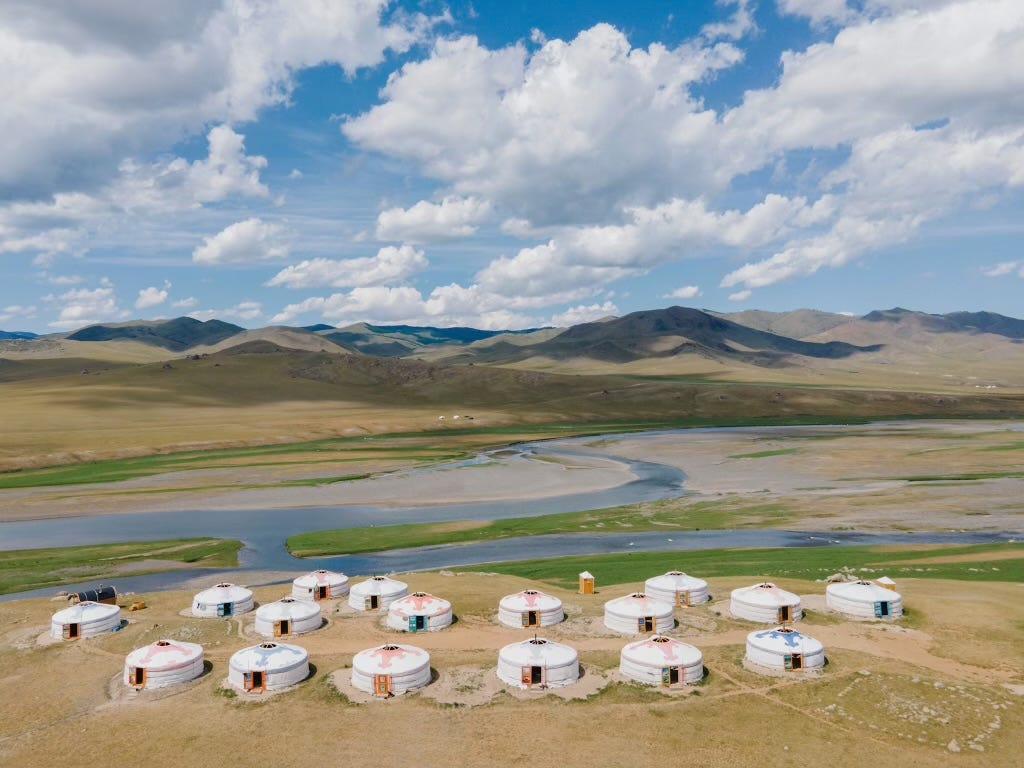
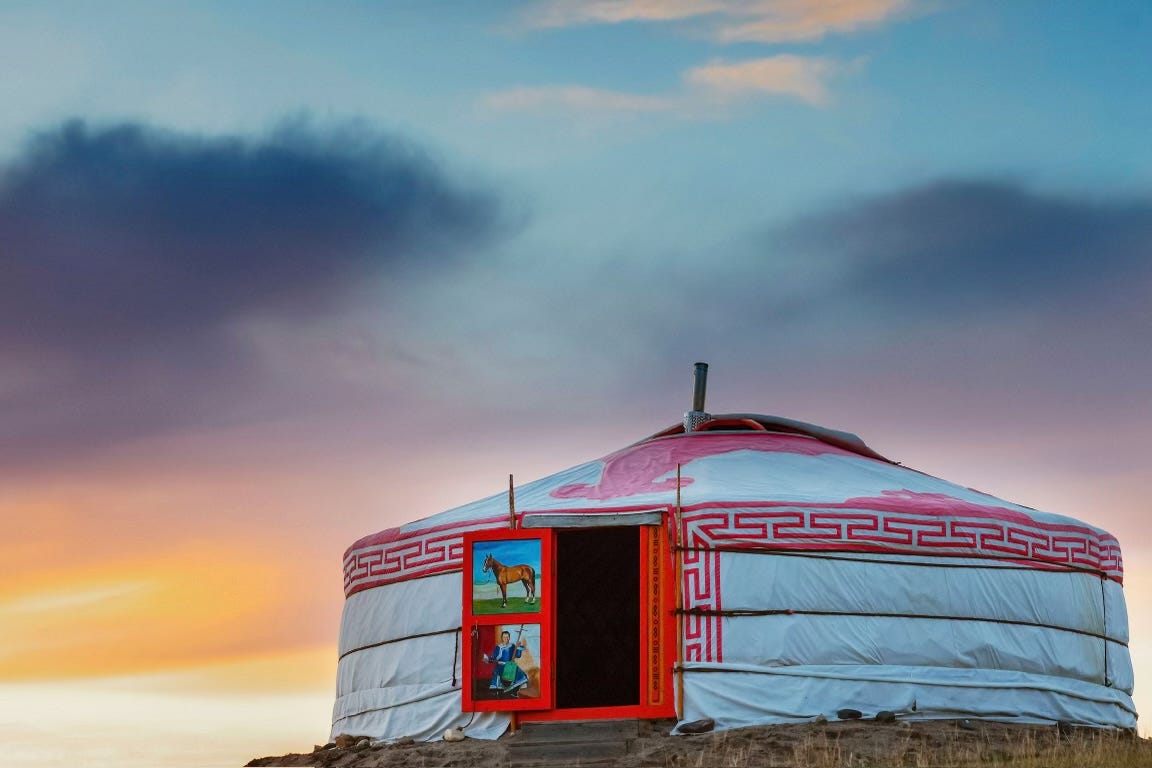
In that quiet, I found myself reflecting on the core questions we explore here at Medium Energy: how do we retain our humanity in the age of exponential technology? And not just retain… but enhance, i.e. how can we build/adopt these tools such that they make us more human, not less?
Mongolia, of all places, holds some answers.
It’s a place that feels miles away from modern life, where nomads live off the land, grounded in tradition and surrounded by nature. But even here, technology has crept in. The difference is, they’ve managed to avoid its downsides while capturing its upsides.
Somehow, the Mongolian nomads have found the right balance. They’ve embraced technology without letting it consume them (aka ‘medium energy’). Understanding how feels more important than ever.
The most obvious reason is AI. The recent breakthroughs are bringing our sci-fi dreams to life at a breakneck pace. And in its wake, the interface to AI and our digital world is rapidly evolving.
I was shocked to see the maturity of Meta’s Orion glasses this week, paired with ‘Her’ level AI and ‘Harry Potter’ grade UI/UX (aka the CTRL labs acquisition finally coming to life).
I thought we’d be waiting at least 2-4 years before seeing a glasses form factor that sleek, that performant, and that close to consumer grade. My timeline for mainstream AR just collapsed dramatically (we’re probably 4-6 years out).
Perhaps more concrete and current is the backlash against the former darlings of tech: smartphones and social media.
Books like The Anxious Generation by Jonathan Haidt are bestsellers, and people are flaunting new-age flip phones as symbols of modern enlightenment, proof that they’re above it all. Meanwhile, neighboring China is the ultimate cautionary tale—an Orwellian reality where algorithms, social credit scores, and surveillance limit freedom.
Then there’s the Mongolian Steppe. Upon arrival, you feel like you’ve stepped back in time
But upon closer examination, that’s not quite the case. There’s an illusion and paradox here worth studying, and it starts with studying the children.
These kids were mature, confident, and poised beyond their years. I met numerous 8–10 year-olds that I would follow into battle. They were little Ender’s in the making, minus ‘the Game’.
One in particular stood out upon our arrival.
He expertly rode his horse through our camp, chin held high and still. He was adorned in ornate, traditional Mongolian garb: a finely woven robe with a stiff collar, a little hat with the folded-up wing tips, and weather torn leather boots.
This kid meant business. He was a relic of Mongolia’s powerful past and a reminder of youthful competence; that children can be more and do more than just bury their heads into a screen.
And then suddenly, he reached into his robe, pulled out a smartphone, and started to scroll.
Illusion shattered.
At first, I was saddened. The thought of these little generals breaking out into TikTok dances and calling each other ‘so brat’ was not something I was ready to accept.
I then became curious: were these kids indeed suffering the same fate as our Western youth?
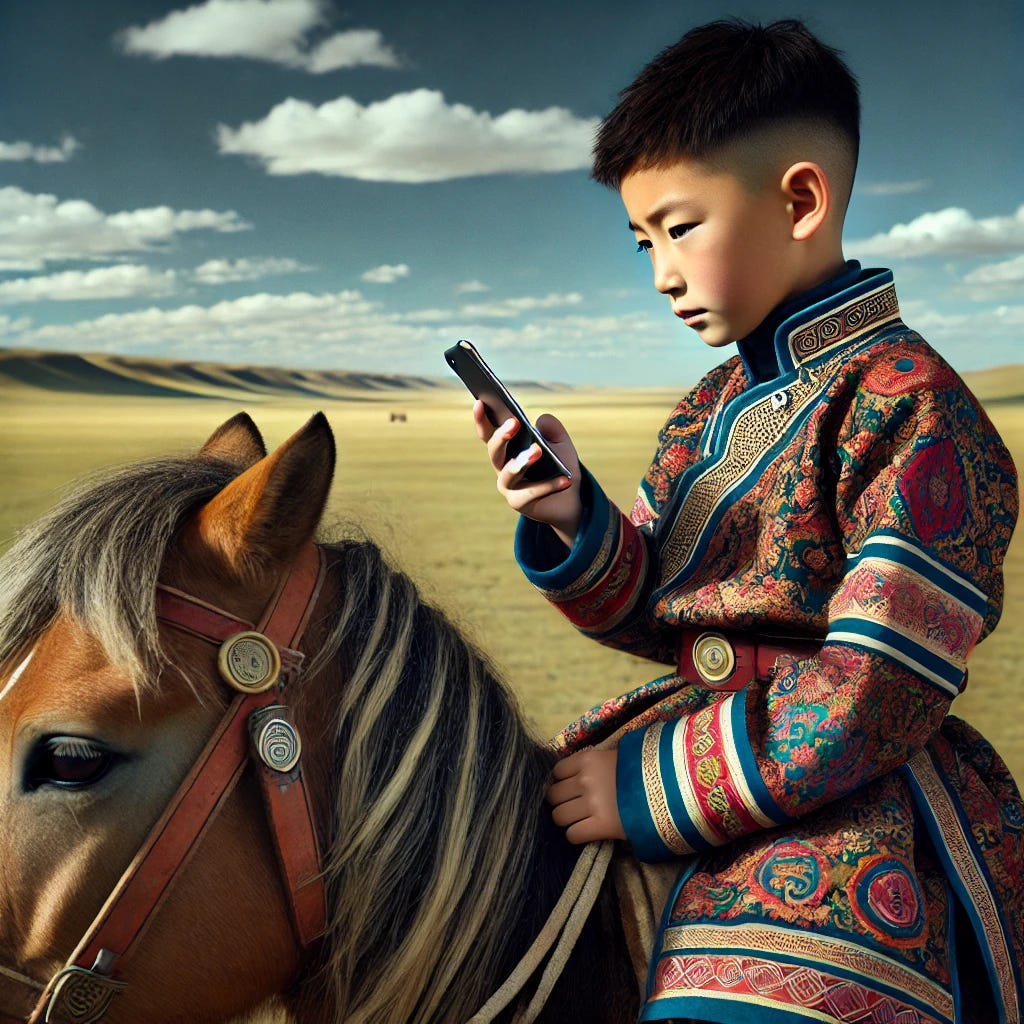
When I asked this question to our camp’s host, his answer was a resounding no. He said they’re too grounded by responsibility and tradition. Failure has real consequences and the past holds real meaning.
From a young age, these kids are forced into the family business: tending to their most important and only real asset; herds of horses, sheep, goats, cows, and yaks.
These crops of critters can range from the hundreds into the thousands. And to the nomads, they’re everything. It’s their primary source of sustenance, warmth, and money (largely as Mongolia’s primary export: fur + cashmere). Everything they do, every move they make, is in service of preserving these herds.
This gives their children an extreme sense of responsibility and accountability. From a young age, they’re forced to take care of something, to nurture something, and to take from it only what they need: fur, plenty of milk, and the occasional slaughter of an unlucky goat or two.
Sounds easy enough. Effectively a bunch of ranchers out on a prairie. How hard can it be?
From June-August, not too hard at all. The Mongolia Steppe is a slice of heaven.
The weather is warm and calm. The blue skies are crystal clear and crisp. The green and mountainous hills roll on and on, as far as the eye can see. The green that covers this vast and expansive landscape is strangely uniform. It’s like someone stretched a singular carpet of grass across the horizon, or if the planet Arrakis from Dune was terraformed and just beginning to sprout a fuzzy layer of green.
Amidst this backdrop, the nomads expertly ride horses across the fuzzy expanse, and through meandering rivers. They chase their herds and zip around on motor bikes. They socialize and drink with their neighbors, playing games, playing music, wrestling, and dressing proudly in traditional Mongolian garb; hopping from Yurt to Yurt, each with an open-door policy. Come one come all. It’s like an Asian version of the Shire, minus the Hobbits.
But then suddenly, it all comes to an end.
Winter comes, and for the remaining 8-10 months of the year, its pure survival mode. This is not your casual winter wonderland. It gets down to -30 to -40 degrees F, with winds that tear through the thickest coats and can uproot the sturdiest of Gers (aka Yurts). The snow can become so dense and the winds so fierce that visibility drops to near zero, turning the vast openness into a disorienting, white void.
Between these bouts of wintery chaos, movement is life. These nomads must continually shift their herds to new grazing grounds, searching for pockets of exposed land where their animals can feed. During the worst winters, survival becomes a delicate balance between maintaining the warmth of the Ger/Yurt, keeping the animals alive, and ensuring there is enough food for the family.
Life is stripped down to its essentials: food, warmth, and shelter. The steppe offers no luxury, no reprieve. It is a test of endurance, where the only certainty is the severity of the cold and the unforgiving nature of the wind.
To live through winter on the Mongolian Steppe is to embrace hardship as an everyday reality. Now you see why failure is not an option, and why a lack of responsibility has real consequence, aka accountability.
Amidst this seemingly ancient lifestyle, there’s a stark contrast. They use drones to find and shepherd their herds. Cell service is abundant and the kids can easily jack into the grid. Social media and mobile games are always just one click away. But the responsibility of daily life seems to have produced a psychological and emotional shielding. The trite elements of social media become laughable and addiction to games, inconceivable.
They see the nonsense, and they get the dopamine hits, but the weeds don’t have the same fertile ground to take root.
You might think this is an extreme case or that it’s erroneous; that this immunity is a product of circumstances we’ll never experience in the West.
Fair. I’m not saying we must face life or death scenarios to offset the downsides of tech.
But it does beg a fair question when it comes to raising our youth: how to simulate the right levels of responsibility and accountability to similar effect? Even if just in bursts?
There are certainly ways. During the Summers, my dad used to rip me out of bed in the early morning, throw me on the construction sites of his commercial real estate projects, and put me to work: picking up trash, stacking bricks, or my favorite… manning a jack hammer in a dark and damp elevator shaft, chipping dried concrete chips off the walls. I can feel the violent chatter of my teeth to this day. Lazy Summer mornings be damned.
At the time, I hated it. In the long run, it worked. Although when my time comes to raise a kid, I’ll certainly strive for more creative and fulfilling ‘simulations’ (by then, maybe that’s exactly what they’ll be… with complex virtual worlds rich with narrative, wonder, and problem solving).
I’ll also think deeply about instilling traditions; the other anchor Mongolians deploy to avoid getting swept up in the digital fray.
Mongolian nomads sprinkle traditions into many aspects of daily life. And their youth embrace it in wonderful ways.
They wear the same traditional gowns, hats, and boots as their ancestors.
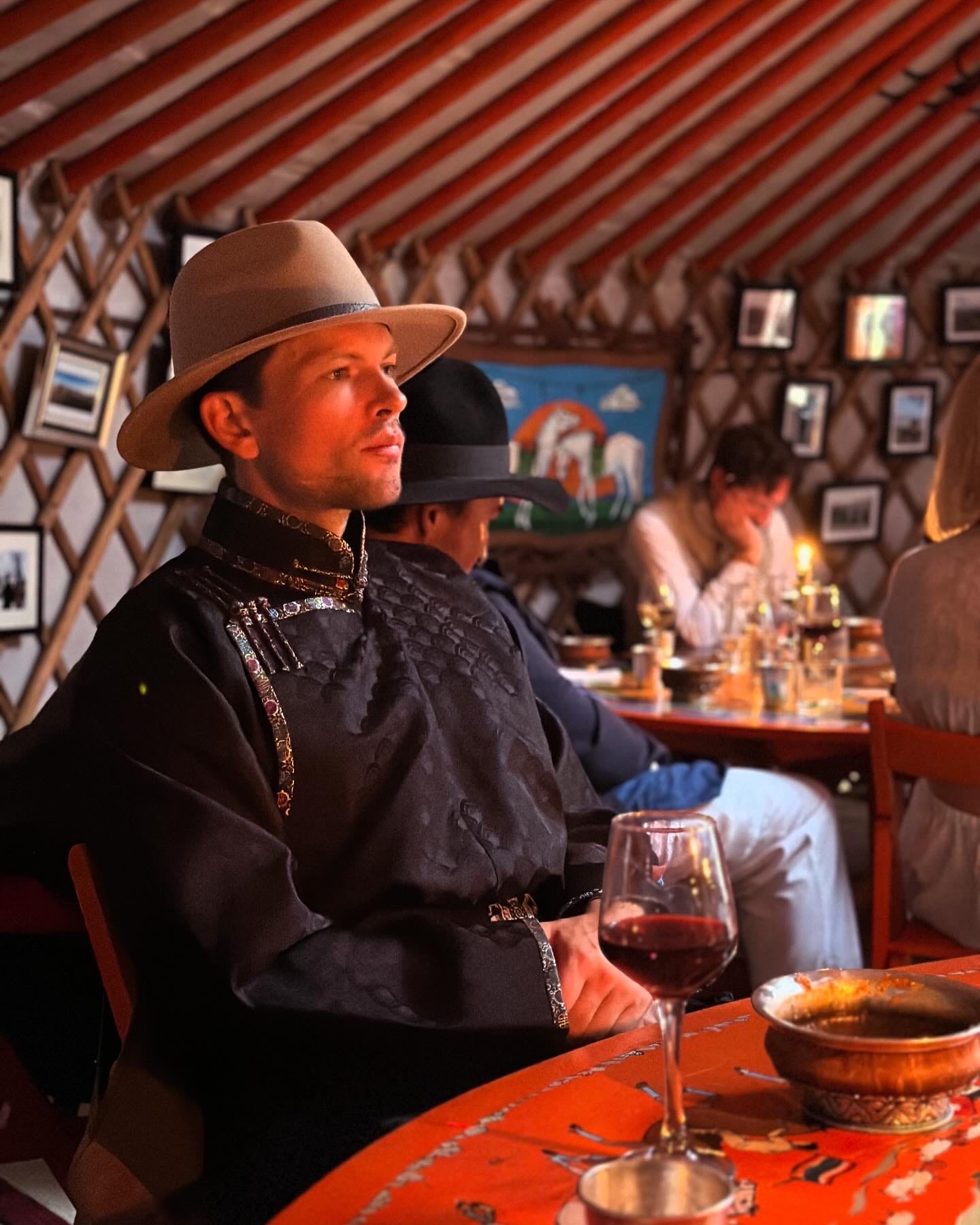
They practice the same forms of song and dance; with traditional instruments, throat singing, and movement.
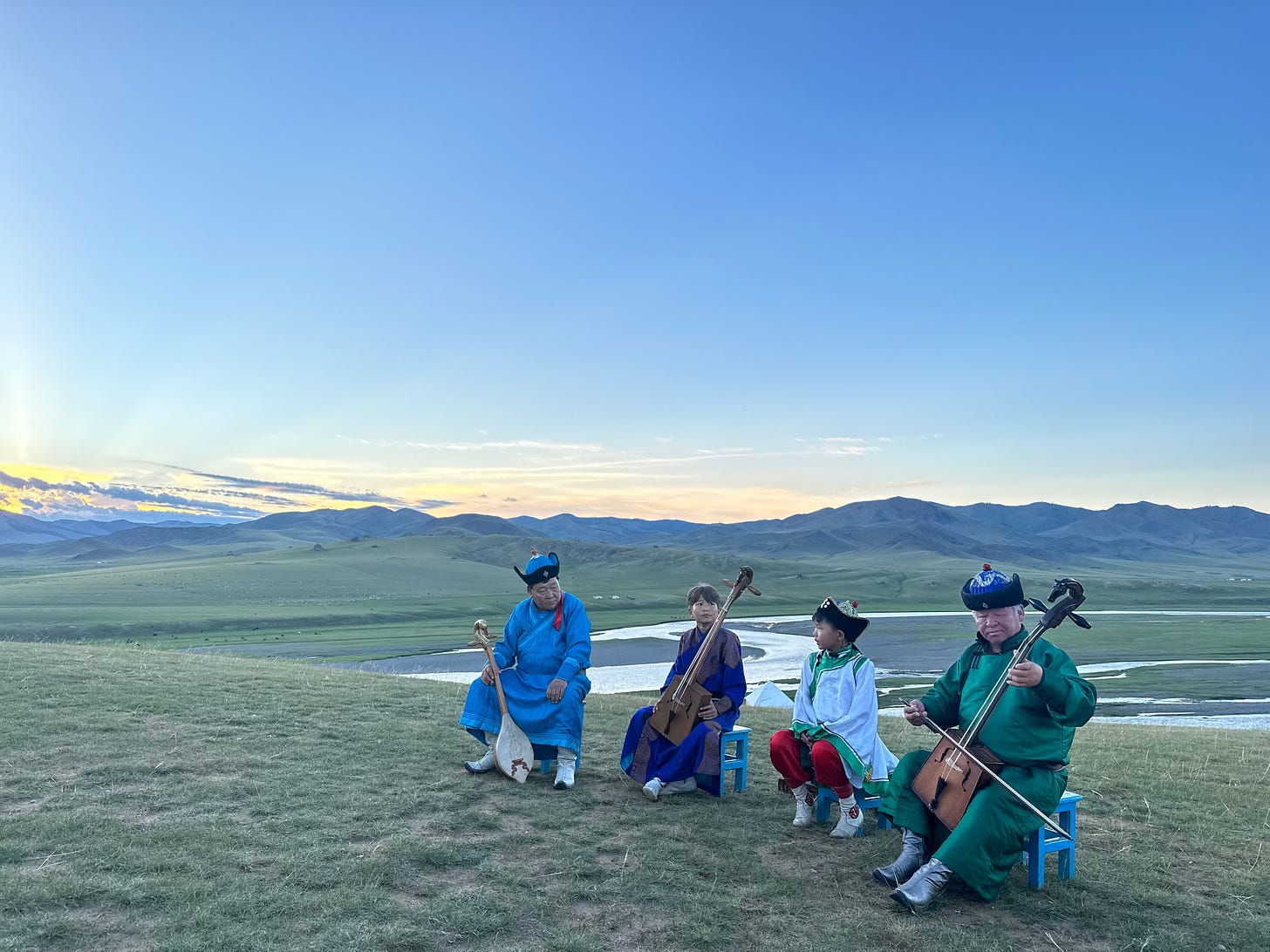
Their favorite sport, wrestling, also remains frozen in time, with the same traditional outfit, the same rules, and the same pre-match dance routine.
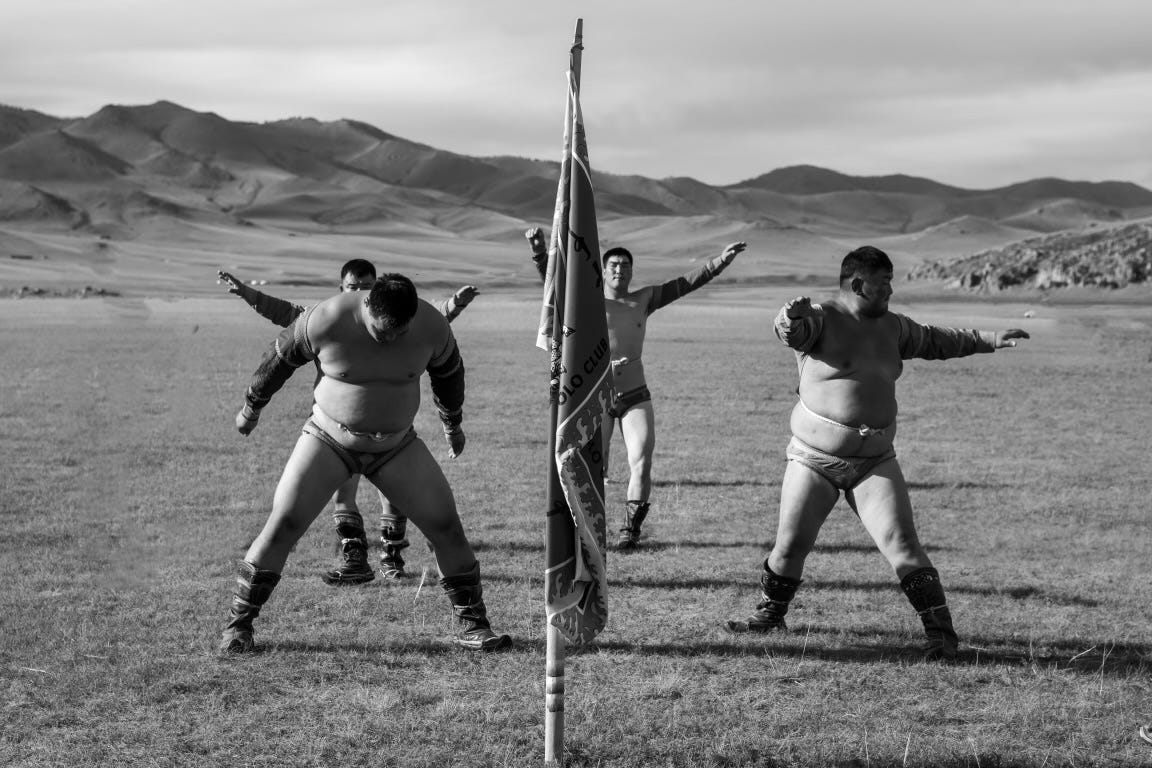
Even the micro-moments hold traditions, including the average exchange. When handing off items/goods/gifts of any sort, each person places two fingers on their forearm and extends an open hand; a relic of the past when exposing the opposite hand proved you weren’t carrying a weapon or trying to poison the other with a concealed vile. Yes, the ancient Mongolian Steppe was a rather hostile place, especially pre-Ghengis Khan’s reign of order.
Some people might see these things as antiquated. But therein lies their hidden power; because these traditions evolved in a slower, less frenetic world, they seem to possess some sort of counterbalance to the pace of modern life.
In a world where algorithms relentlessly shape our habits and routines, traditions offer something richer, and increasingly rare: intentionality.
They also offer what technology often strips away: a sense of rootedness, connection to something larger, and the ability to sit with life as it unfolds, rather than constantly striving to control or curate it from tiny rectangles in our pockets.
Snapping us back to the future… This is why I’m so excited about the combo of AI and AR/spatial computing. It’s going to allow technology to dissolve into the background, intelligently displaying just the right amount of information, at just the right time, in just the right place, in just the right context (where we are, who we’re with, what we’re doing).
This is a paradigm in which technology conforms to us, rather than us having to conform to it.
But with this, comes an inevitable reality: we will become technology, and technology will become us.
Heck, it already has. As I look around in the cafe where I’m writing this… every other person on a laptop is hacking away into ChatGPT. We’re already offloading our thinking, our judgment, and our creativity to algorithms. And as for the hardware; smartphones have already made us cyborgs by definition; they’re direct extensions of our minds, our spirit, and our identity.
As this fusion accelerates and hardens, the primary message here is this: we must work to harden the most human parts of ourselves. If Mongolia taught me anything, it’s that we can throw down anchors to our humanity. They do so with anchors to each other (accountability), and anchors to their past (traditions).
What are your anchors?
Thanks for reading this essay by Evan Helda. If you enjoyed, check out MediumEnergy.io, where he explores spatial computing, AI, and how these tools can make us more human, not less.